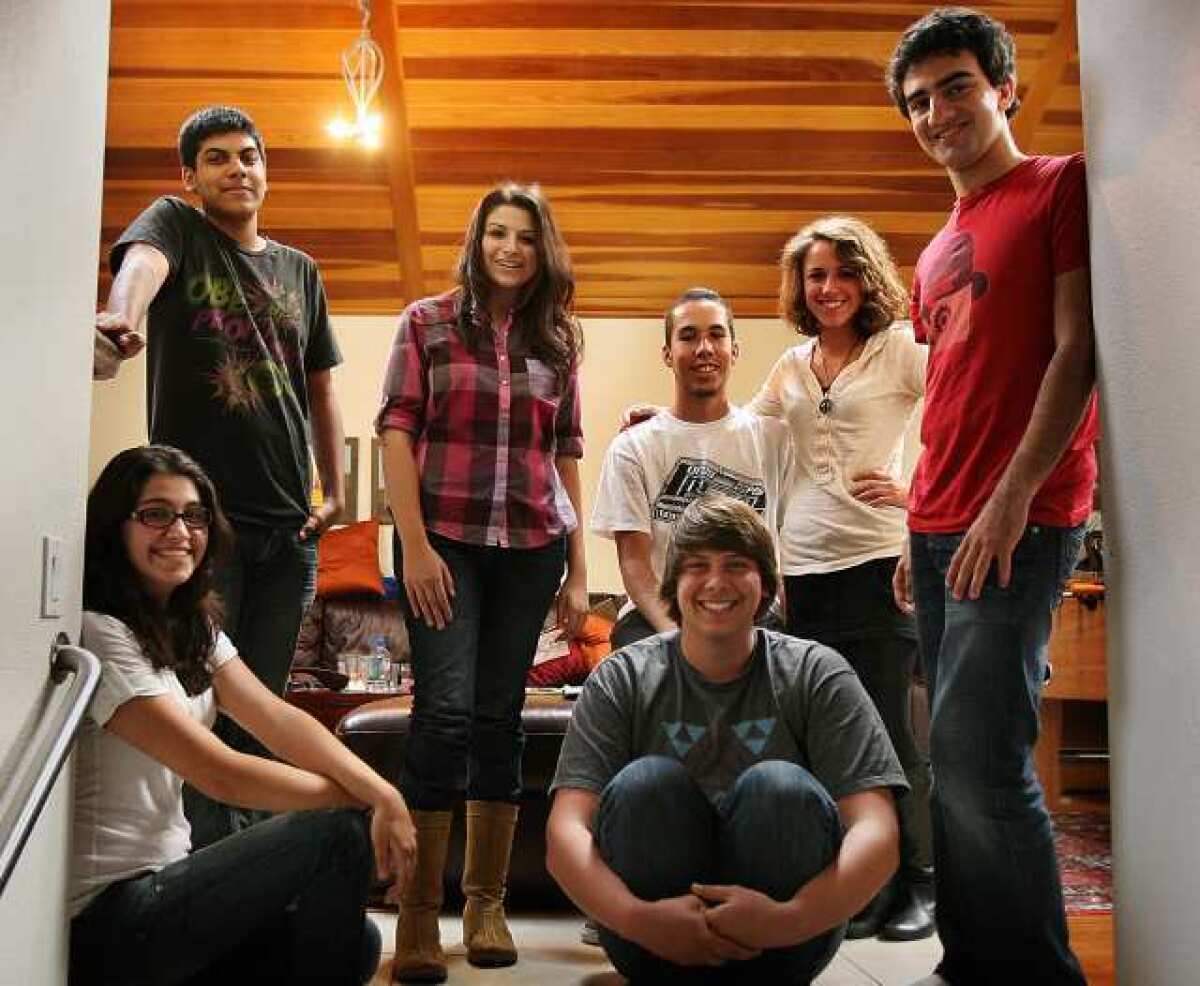Teen alcohol consumption: A tangled network leads to a surprising conclusion

- Share via
When your teen comes home slurring, swaying and smelling of alcohol, here’s a research finding that will help you pinpoint whom to finger as the major “bad influence” in the kid’s life. First, a couple of hints: It’s not that rowdy gang of boys your son hangs out with, and it’s not those girls who wear too much makeup that your daughter’s fallen in with. It’s also not the new love interest in your kid’s life, either (well, not precisely).
In fact, a new study finds the most potent change agent upon your kid’s risky drinking behavior is his new girlfriend’s group of BFFs, or her new boyfriend’s entourage of guys.
That’s right. Her love interest’s guy friends appear to set the drinking standard that your daughter is most likely to emulate. And the girlfriends of the girl he likes are the major influence on how your son’s habit of drinking -- and binge drinking -- changes.
Complex? Yes, but this is teen world we’re talking about here, and no one ever said it would be simple.
This finding emerges from a clever and diabolically complicated study published in the American Sociological Review this week. To reach this conclusion, researchers tapped into data collected by the National Longitudinal Study of Adolescent Health, which in the 1994-95 school year, went into 132 U.S. middle and high schools and conducted in-depth surveys of students’ health, health-related behaviors, school-related activities and family, friendships and romantic relations. In 1996, follow-up interviews and questionnaires helped paint a detailed portrait of teens’ lives.
Sociologists Derek A. Kreager of Penn State and Dana L. Haynie of Ohio State University took that information and “mapped” the complex, interlocking, overlapping web of relationships of 449 adolescent couples and 898 “friends” from 94 different schools. They lined up those friendship and romantic ties alongside a child’s individual history of drinking behavior to see how, and where, they converged over time.
When it came to a kid’s likelihood of binge drinking (consuming five or more servings of alcohol in a single sitting), his or her own friends clearly mattered: A friend’s recent history of binge drinking increased a child’s likelihood of doing the same (over and above his or her established drinking patterns) by 30%. And romantic partners mattered too: If the guy or girl your kid likes has recently gotten blasted, your kid was 32% more likely than he or she already was to binge-drink too.
But overwhelmingly kids’ drinking patterns seemed to follow the lead of their love-interest’s friends. If his entourage had a history of binge drinking, your daughter was 81% more likely to follow suit. If her posse of girlfriends were in the habit of getting wasted, your son was 81% more likely to join in that behavior.
(On the whole, girls drank less -- and less often -- than boys, so while drinking patterns changed equally for both boys and girls, they started at different base lines. Also, only heterosexual couples were included in this study, because too few gay or lesbian couples identified themselves to make a representative sample.)
Why were his or her friends so influential? The authors surmised that a girl or boy looking to cement a romantic relationship will naturally adjust his or her risky behavior to match that of her or his potential mate’s buddies. Your child likely calculates that befriending those important people will make him or her more appealing to the person he or she has a crush on. And, in fact, in cases in which the crush was one-sided, the influence of a potential mate’s friends was even more powerful.
Importantly, Kreager and Haynie note that this indirect pattern of influence may be an important route by which drinking behavior “diffuses” through high schools, spreading among cliques, jumping between groups of girls and boys, and generally spreading across disparate populations of adolescents. The girl who crosses from her girl-group to party with the guys, and the guy who leaves his friends to drink with his girlfriend’s girls is a “bridge” that carries norms and customs from one cluster of kids to another.




